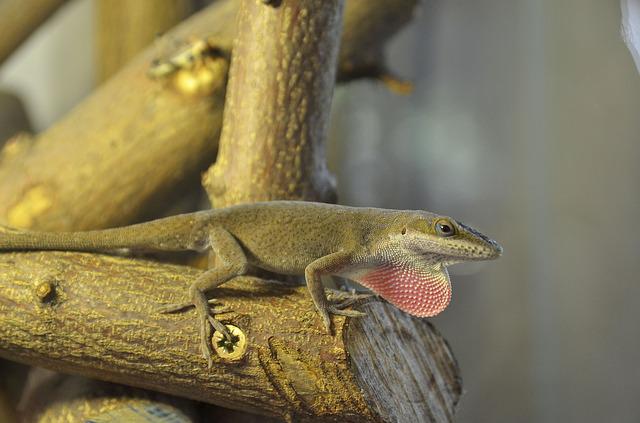If you’ve ever wondered how long anoles live in captivity, you’re not alone. This is a question that many people have, and it’s not always easy to find the answer. This blog post will provide a comprehensive guide to the lifespan of anoles in captivity. We’ll also offer tips on extending their life span as much as possible.
How long do anoles live in captivity?
Anoles are a lizard native to the southeastern United States, the Caribbean, and Central and South America.
In captivity, they typically live between 5 and 8 years, although some have lived up to 10 years.
The average lifespan of an anole in the wild is unknown but is thought to be shorter than in captivity due to predation and other environmental hazards. Anoles are relatively easy to care for in captivity, and their diet consists mainly of insects.
They require a spacious cage with plenty of hiding places and a basking area where they can warm themselves.
If you are considering keeping an anole as a pet, be prepared to provide it with the care it needs to live a long and healthy life.
Things to do to extend an anoles life in captivity
They require a humid environment with plenty of plants and trees.
Anoles are a lizard native to the warm, humid climates of Central and South America.
In the wild, they can be found living in forests, jungles, and swamps, where there are plenty of plants and trees for them to climb.
Anoles require a high humidity level to stay healthy, and they often spend time basking in the sun or on tree branches to regulate their body temperature.
They are also adept climbers and often take refuge in the treetops when the ground becomes too hot or dry.
If you are interested in keeping anoles as pets, creating an enclosure that resembles their natural environment as closely as possible is essential.
This means providing plenty of plants and trees, as well as a way to maintain high levels of humidity. Doing so can ensure that your pet anole stays happy and healthy.
Make sure to feed anoles a balanced diet of insects, fruits, and vegetables.
A well-balanced diet is essential for all creatures, including our little green friends, the anoles.
While it’s true that these lizards are primarily insectivores, they also enjoy the occasional fruit or veggie. A diet that includes a mix of all three food groups is best for maintaining their health and vitality. So what should you feed your anole?
A good rule of thumb is to offer them a variety of small insects, along with some chopped-up fruits and vegetables.
Feeder insects such as crickets and mealworms are a great source of protein, while fruits and veggies provide essential vitamins and minerals.
But be sure to avoid giving them fish, as this can lead to malnutrition. With some care and attention, you can ensure that your anole stays happy and healthy for years to come.
Provide anoles with a basking area where they can warm up their bodies
Lizards are ectotherms, meaning they cannot generate body heat and must rely on external sources to stay warm.
Lizards basking in the sun are standard in the wild, using heat to regulate their body temperature.
When kept as pets, it’s essential to provide lizards with a basking area where they can warm up their bodies.
This can be accomplished using a basking lamp, which provides heat and light. The basking area should be located at one end of the enclosure so the lizard can move away from the heat if necessary.
By creating a basking area for your pet lizard, you’ll provide them with the warmth they need to stay healthy and active.
Keep anoles tank clean by removing waste products and replacing the water regularly.
Keeping your anole’s tank clean is essential to their health.
Waste products should be removed regularly, and the water should be replaced at least once a week.
Anoles are very sensitive to their environment, so keeping the tank clean and free of harmful chemicals is essential.
The best way to do this is to use a reptile-safe cleaner and follow the directions carefully.
In addition, you should keep an eye on your anole’s food and water dishes to ensure they are always clean. By taking these simple steps, you can help keep your anole healthy and happy.
FAQs about Anoles
Q: What is the natural habitat of anoles?
A: Anoles are native to the warm, humid climates of Central and South America. In the wild, they live in forests, jungles, and swamps.
Q: What do anoles eat?
A: A well-balanced diet for an anole should include a variety of small insects, along with some chopped-up fruits and vegetables. Feeder insects such as crickets and mealworms are a great source of protein, while fruits and veggies provide essential vitamins and minerals.
Q: How often should I clean my anole’s tank?
A: Waste products should be removed from the tank regularly, and the water should be replaced at least once a week. Anoles are very sensitive to their environment, so keeping the tank clean and free of harmful chemicals is essential.
Q: How can I tell if my anole is healthy?
A: A healthy anole should be active and alert, with clear eyes and smooth skin. If you notice any changes in your anole’s appearance or behavior, you must take them to the vet for a check-up.




